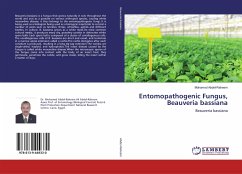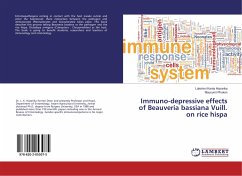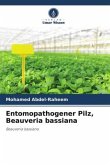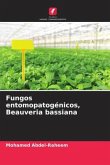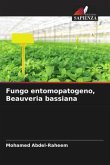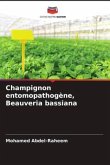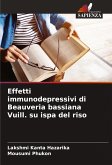Beauveria bassiana is a fungus that grows naturally in soils throughout the world and acts as a parasite on various arthropod species, causing white muscardine disease; it thus belongs to the entomopathogenic fungi. It is being used as a biological being used as a biological insecticide to control a number of pests such as termites, thrips, whiteflies, aphids and different beetles. In culture, B. bassiana grows as a white mold.On most common cultural media, it produces many dry, powdery conidia in distinctive white spore balls. Each spore ball is composed of a cluster of conidiogenous cells. The conidiogenous cells of B. bassiana are short and ovoid, and terminate in a narrow apical extension called a rachis.The rachis elongates after each conidium is produced, resulting in a long zig-zag extension.The conidia are single-celled, haploid, and hydrophobic.The insect disease caused by the fungus is called white muscardine disease.When the microscopic spores of the fungus come into contact with the body of an insect host; they germinate, penetrate the cuticle, and grow inside, killing the insect within a matter of days.
Bitte wählen Sie Ihr Anliegen aus.
Rechnungen
Retourenschein anfordern
Bestellstatus
Storno

